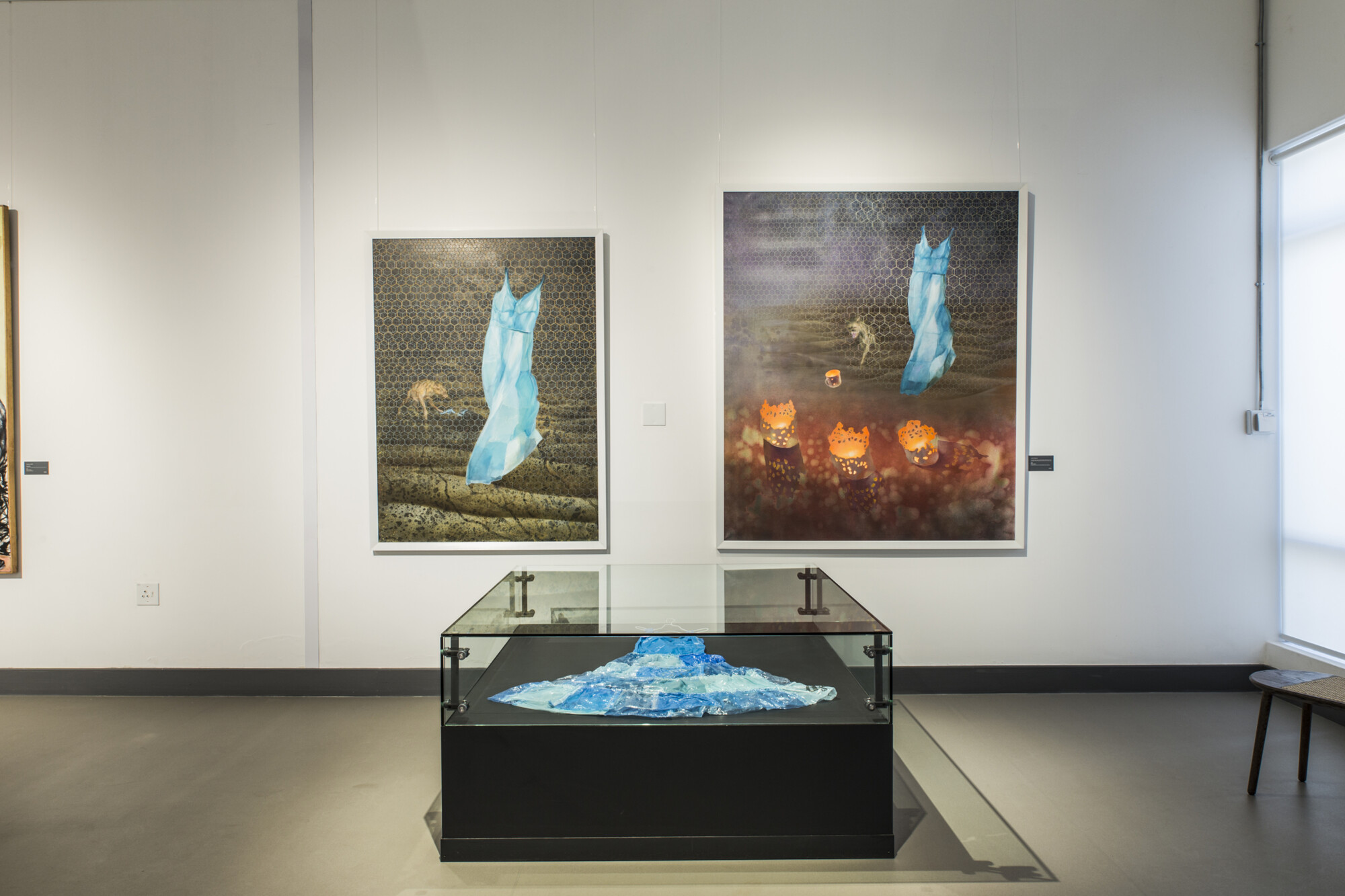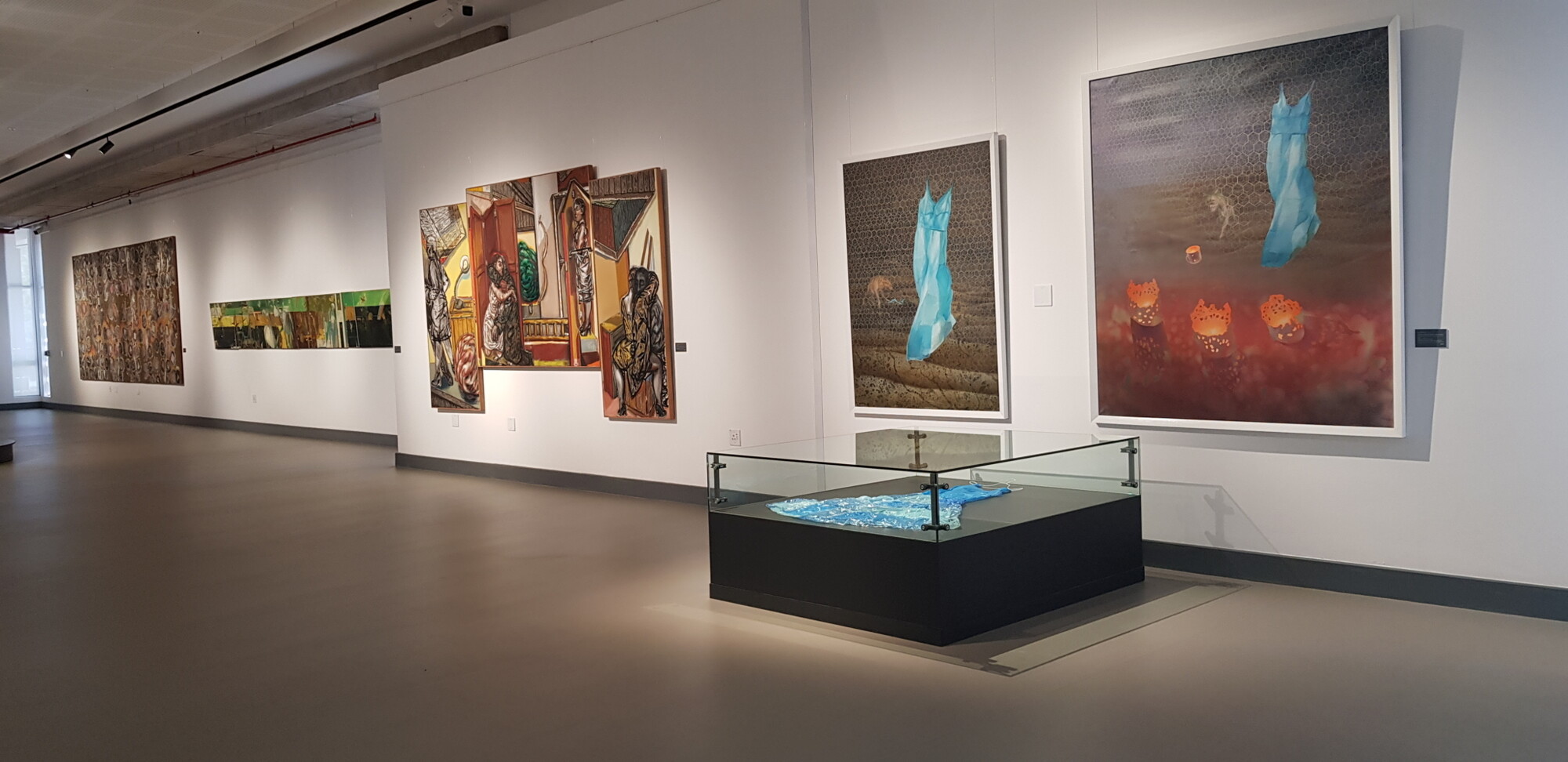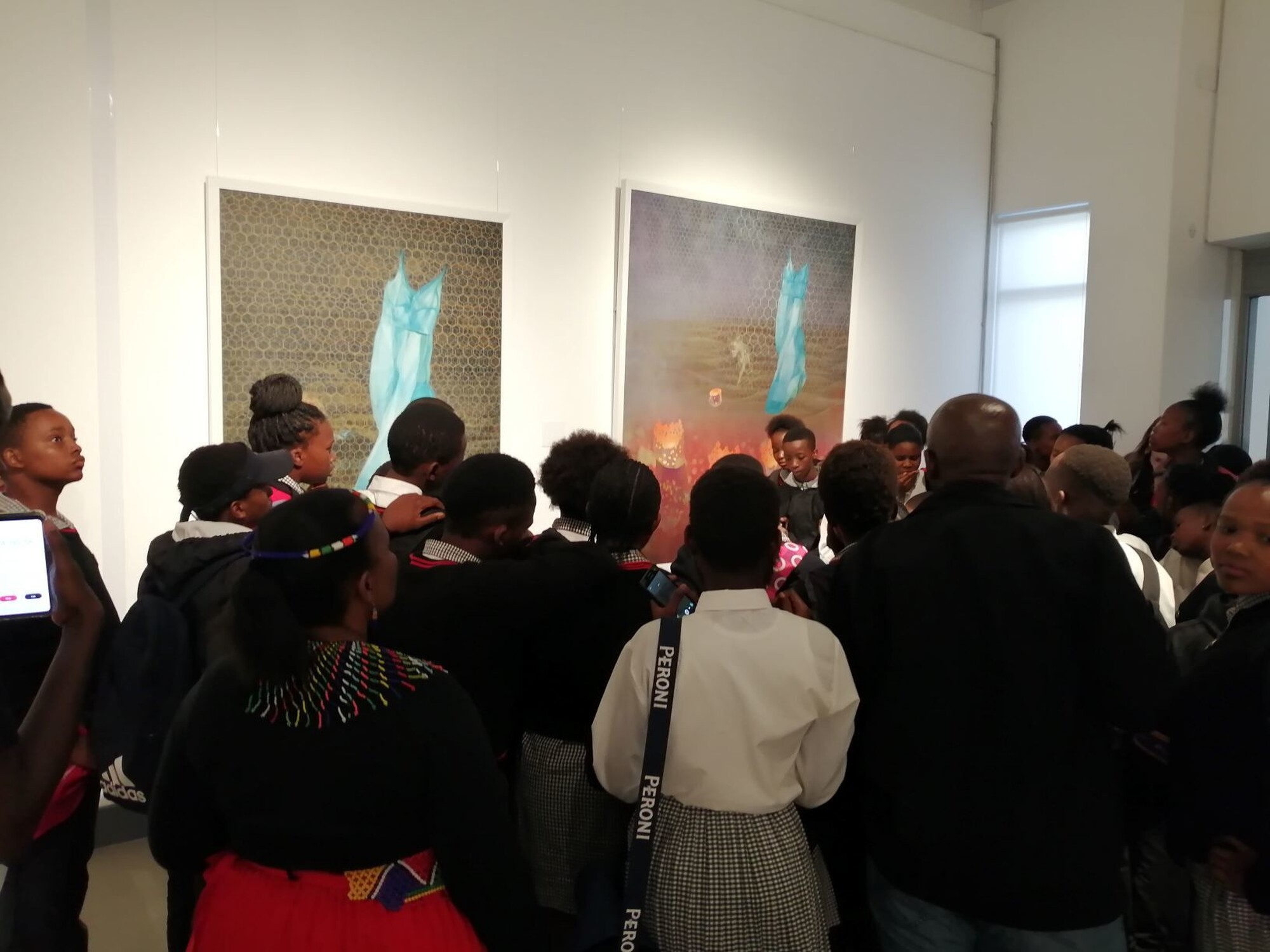Last chance to see the Blue Dress artwork at Javett-UP
Date posted: 29 January 2020
Judith Mason’s The Man Who Sang and the Woman Who Kept Silent (1998), the beloved signature piece of the Constitutional Court Art Collection (CCAC) popularly known as the "Blue Dress", can be seen at the Javett Art Centre at the University of Pretoria (Javett-UP) up until Sunday, the 8th of March 2020.
The artwork forms part of one of Javett-UP’s three inaugural exhibitions, 101 Collecting Conversations: Signature Works of a Century. The art centre opened its doors to the public on the 24th of September 2019.
The artworks forming part of this exhibition comprises of a collection of 101 signature works of South African art selected from public and private collections around the country. The works were chosen from over 300 significant works of art that were nominated to form part of the exhibition.
The triptych will return to the public gallery of the Constitutional Court in late March 2020. The Constitutional Court Trust, the custodian of the CCAC, is pleased that this artwork could form part of this fantastic exhibition of seminal South African artworks.
For more information about Javett-UP visit their website at Javett-UP
ARTIST
Judith Mason was born in Pretoria in 1938 and went to Pretoria Girls High School and then the University of the Witwatersrand. She taught painting at several universities and had her first solo exhibition in Johannesburg in 1964. She went on to have many local shows and to represent South Africa in major international exhibitions. Her work is underpinned by her deep moral sensibility. It seeks to make sense of what she saw as the chaos of the world and is extremely wide-ranging in respect to form and technique. Mason drew on history, mythology and the symbols of various religions in her depictions of the human and animal worlds. She completed several important public commissions and had a major retrospective at the Standard Bank Gallery in 2008. She died in White River in 2016.
THE CONTEXT
Though much of Mason’s work seems to represent metaphysical and mythical themes and images, she was politically conscious and often responded to specific events in South Africa. The work here is drawn from Mason’s interpretation of events at the Truth and Reconciliation Commission (TRC) proceedings, which ran from 1996 to 1998 and attempted to address human rights violations committed under apartheid. It permitted perpetrators of violence to testify and seek amnesty from prosecution.
THE WORK
The Man Who Sang and the Woman Who Kept Silent is Mason’s representation of two cases presented before the TRC involving ANC cadres. In one, Harald Sefola (the man who sang) was abducted, tortured and eventually electrocuted in a field near Witbank. While awaiting his death he sang ‘Nkosi Sikelel’ iAfrika’. The other is the story of Phila Ndwande (the woman who kept silent) who was tortured and kept naked by security police for weeks in order to compel her to inform on her comrades. Before she was eventually executed she made a pair of panties out of a plastic bag to cover her nakedness, and it is to this garment, found on her body when it was exhumed, that the blue dress refers. The words on the dress include these: ‘... At some level you shamed your capturers, and they did not compound their abuse of you by stripping you a second time. Yet they killed you. We only know your story because a sniggering man remembered how brave you were. Memorials to your courage are everywhere; they blow about in the streets and drift on the tide and cling to thorn bushes. This dress is made from some of them. Hamba kahle. Umkhonto.’

Photograph by Thania Louw

Photograph by Shenaz Mohammed

Photograph by Catherine Kennedy